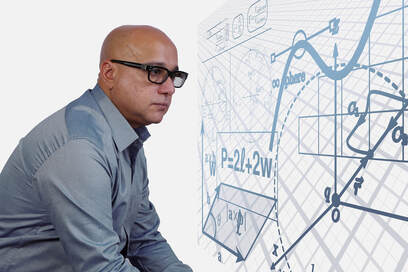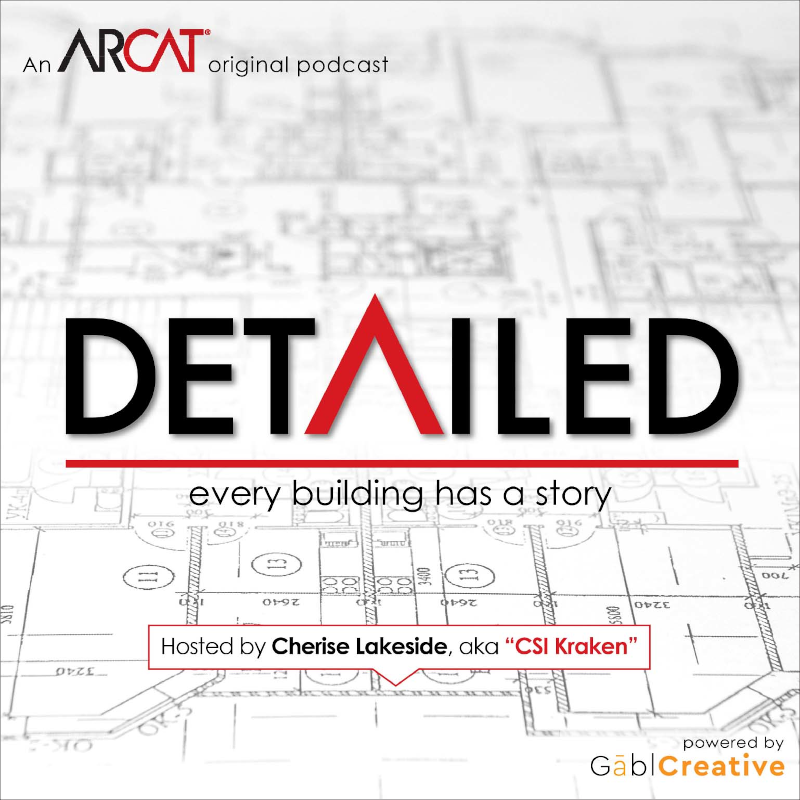|
Contributed by Eric D. Lussier If you were a frequent reader to the "Let's Fix Construction" blog, you have, or at least I hope you have, wondered where the new posts and contributions have gone. So do I.
Fourteen months removed from a monumental change to ALL of our lives, I have found myself more disconnected at times now than at any point in 2020. And that is just as the glowing light at the end of the tunnel seems to be brighter than ever. We're good to live a life unmasked IF you're vaccinated. Live concerts are returning. New cases are not the lead story on the news. A return to norm seems to be right in front of us. But, what will be the new norm? Will offices go back to full capacity? Will you ever have an employer again that questions the work from home model? Will we be more apt to jump on a Zoom to connect with someone? Will virtual events be the standard and in-person be the exception? I don't know the answers. I have struggled many times with where to bring this website and blog. The content that at one time flowed from contributors, including myself, has slowed. The energy and time to curate was getting harder and harder to find and that was before a global pandemic fundamentally changed everything we did. I, like many, hit a time of rock bottom in 2020. It turned out to be a rollercoaster of a year, and it included many highs and many lows. 2021 started much the same and I've experienced more emotions on a personal level than I anticipated after "surviving" 2020. I continue to look within, try to re-establish the groove that I found at times last year, and find it harder and harder to do so. What does all of this have to do with "Let's Fix Construction"? Well, for background, the LFC movement was never about one person or one voice. It was always about the long list of contributors, whether they were a one-time poster, or offered multiple titles. As I internalize about which direction to push the website, I know that I don't want to be a one-voice channel, nor do I want it to only be about flooring. Meanwhile, I also recognize that through the voices of myself and others, that a destination has been established here for true form and proper function with the AEC industry. As business was booming within the construction industry a few years ago, I saw firsthand how the knowledgeshare went from a giving model to almost an SEO-model. Meaning those that I relied on for words and thoughts were doing so from their own freewill, and because they wanted to give. And when time became harder to find to continue to give, priorities were shifted elsewhere - to business, to family, to living. Myself included. So, as I plot out a future for "Let's Fix Construction" that I hope looks like pre-pandemic days, I ask for advice. What would you like to see going forward on these pages, in person and on airwaves? Are you consuming more podcasts and less blog reading now? Do you still look to the written word? How are you finding your trusted advisors? Please comment below or reach out to [email protected] and I look forward to hearing from you.
13 Comments
Contributed by Eric D. Lussier
Hi.
It's Eric. Yeah, it's been a while. I know. I'm sorry. Please accept my apology? Thank you. I could use your help. As many in the AEC (Architecture/Engineering/Construction) industry face a return to some sort of office-life, normalcy or jobsites after COVID-19, I wanted to take this time to use your knowledge, experience and assistance in matters that are near and dear to my professional life, concrete and flooring finishes. Concrete moisture, surface planarity, adhesives, new products, lack of training and the skilled labor shortages are quite possibly just the tip of the iceberg when it comes to what many of us deal with on a daily basis. I would VERY MUCH appreciate it if you could take just three minutes to answer three different questions as it pertains to concrete and flooring. The best part is you can remain completely anonymous if you wish. Don't feel like answering this Google Form? Then please email me at [email protected] or send a video or text to me at 802-922-8407. I cannot thank you enough. I'm excited to read your replies. Contributed by Eric Hardenbrook After reading last week's post, 'Where Did the Good Drawings Go?', I wanted to comment. I tried to formulate a way to squeeze all the things I wanted to say into that little comment box while remaining coherent. It just didn't work, there was simply too much to say. Rather than piling on or picking specific pieces to react to, I need to go in an additional direction that dovetails with what that article had to say.
Architecture schools need to adapt or die. An alternate path to obtaining a license for technical architecture should be created and contain mandatory time at a construction site as a graduation requirement. If you have a problem with your foot, you don't go see a cardiologist. The medical profession figured it out, architecture should too. Why do I have to see a designer if my needs are technical when it comes to my building? There should be room for both. The question of the drawings is what I found particularly vexing. I was delighted that we at least are not blaming the software at this point. A carpenter shouldn't blame the hammer if the cabinets are crooked. What are you looking at when you say 'drawings' these days? Are you holding one sheet of paper? A roll of drawings? An iPad or a smart device or a laptop? Did you get the whole set of drawings or just the parts that were deemed to pertain to what you're working on, without regard to where those references come from? Better, do you have a screen in the job trailer with a junior member of the team 'driving' you around a three-dimensional view of the project? Where did that model come from? Who made the decisions on all the parts that model was created from? In short ~ when you say 'drawings', what are your expectations? That brings us to the expertise part. When you – or anyone really – are signing a deal, what are you agreeing to? Yes, there's all that so-called standard language at the front end of the spec, but is the AIA E203 or G201 included in the contract documents? Have you discussed any of what is in those with your team? And not just your own office, but any consultants you might be working with? When those items are part of the mix, you are saddling the team with very specific technology requirements along with 'just making drawings'. Contributed by Jeffrey Potter The AEC industry is finally recognizing their treasure chest of data. It’s like the explosion of analytics with baseball (aka sabermetrics), it took over 100 years for baseball to realize what data chest they had and how to implement it. The same event is happening within the AEC industry and you better hop on the train now because it’s moving fast. Everything from the design of the building to the construction of the building is using data now in some capacity, but what about the specs, how can data assist or improve the role of specifications? The answer is probably not what you think…
When I realized the treasure chest of spec data I was sitting on, I work with a software where everything is stored on a server, my mind literally had one of those light bulb moments. Initially, from our project history in the server, I was able to figure the most commonly used sections and do two things. First, I cut down our 100-page specifications checklist to 40-pages, and finally to what is now 10-pages, of all the common sections for selections. Second, I created a historical archive where we keep those sections that have only been used once or twice in the past 4 years to be stored. My mind was blown, the possibilities where endless. I got amazing reviews for the two items above, and had so many other ideas on how to extract specification data and analyze it, but was going in the wrong direction until… A few months later, I had another light bulb moment. There is such a thing as good data and bad/useless data. I was moving into the bad/useless data realm. For one example I wanted to figure or set up a template project with the top X amount of sections. Because every good size project has the same basic sections, it would be easy to set up and save time, but this conflicted with the Revit Model and how we bring specifications into our software. Which essentially does the same thing as a template project, although much quicker and smarter. Then, what would I do on small projects or much larger projects? This wasn’t the solution I was looking for on my data set. My next train of thought took me down some exciting new avenues on how we can leverage data with specifications: product use and production. Product use is extremely important and I simply define it as “a product specified on a project that was installed”, pretty simple. Why is this important? Because if I am specifying Product A on 85% of my projects, yet on 75% of those projects, the Contractor is substituting for Product B… Why am I specifying this product? Why is the Contractor substituting? Is it because Product A cost more, harder on labor? Is it a regional item where Contractors in a specific region want Product B? Is my firm specifying old technology? Is one office favoring Product A over Product B? As you can see many questions arise, but the big ones are … Contributed by Michael Chambers As an architectural marketer, educator, and trainer, I have tried to identify and present the most effective ways of reaching architects, establishing relationships, getting products listed in specifications, developing great educational programs, improving presentation skills, minimizing substitutions, networking, and a host of other strategies and tactics to effectively market architectural design professionals. Marketing not Sales I have long pounded home the notion that you don’t sell design professionals; you market them. The critical strategy is how to overcome the “peddler” image of the product rep and become a key resource and industry expert. Time and time again, I have made the point that architects don’t buy products; they specify them. I have offered the notion that marketing is really education; so, don’t sell, educate. While marketing is a key aspect of the effective construction product representative, it still is not the whole package. Issues on specifying and specifications are integral to success. Developing and presenting outstanding continuing education programs are incredibly effective in opening doors into design professional offices are crucial. Learning to be marketer-educator instead of a salesperson is the hallmark of a successful construction product representative. What is Missing? What then is the missing element in highly effective construction product representative? I have found myself coming full circle in the process and am convinced that in the end, the bottom line is selling. Not selling products, no, never that, but selling solutions. Design professionals operate on the basis of identifying problems and developing solutions for those problems. Products Rarely Solve Problems Products are merely elements in a solution, and it is critical to being effective with design professionals to make this key differentiation. Solutions solve problems; products are a part of a solution, but not the solution itself. Don’t misunderstand, products are critical to good solutions but are rarely the sum total of an actual solution to a problem. Solutions are made up of a series of issues, elements, constraints, and opportunities that can be simple or complex and require a range of responses to solve. A product is merely on element of a solution.
|
AboutLet's Fix Construction is an avenue to offer creative solutions, separate myths from facts and erase misconceptions about the architecture, engineering and construction (AEC) industry. Check out Cherise's latest podcast
Get blog post notifications hereArchives
March 2022
Categories
All
|





 RSS Feed
RSS Feed
